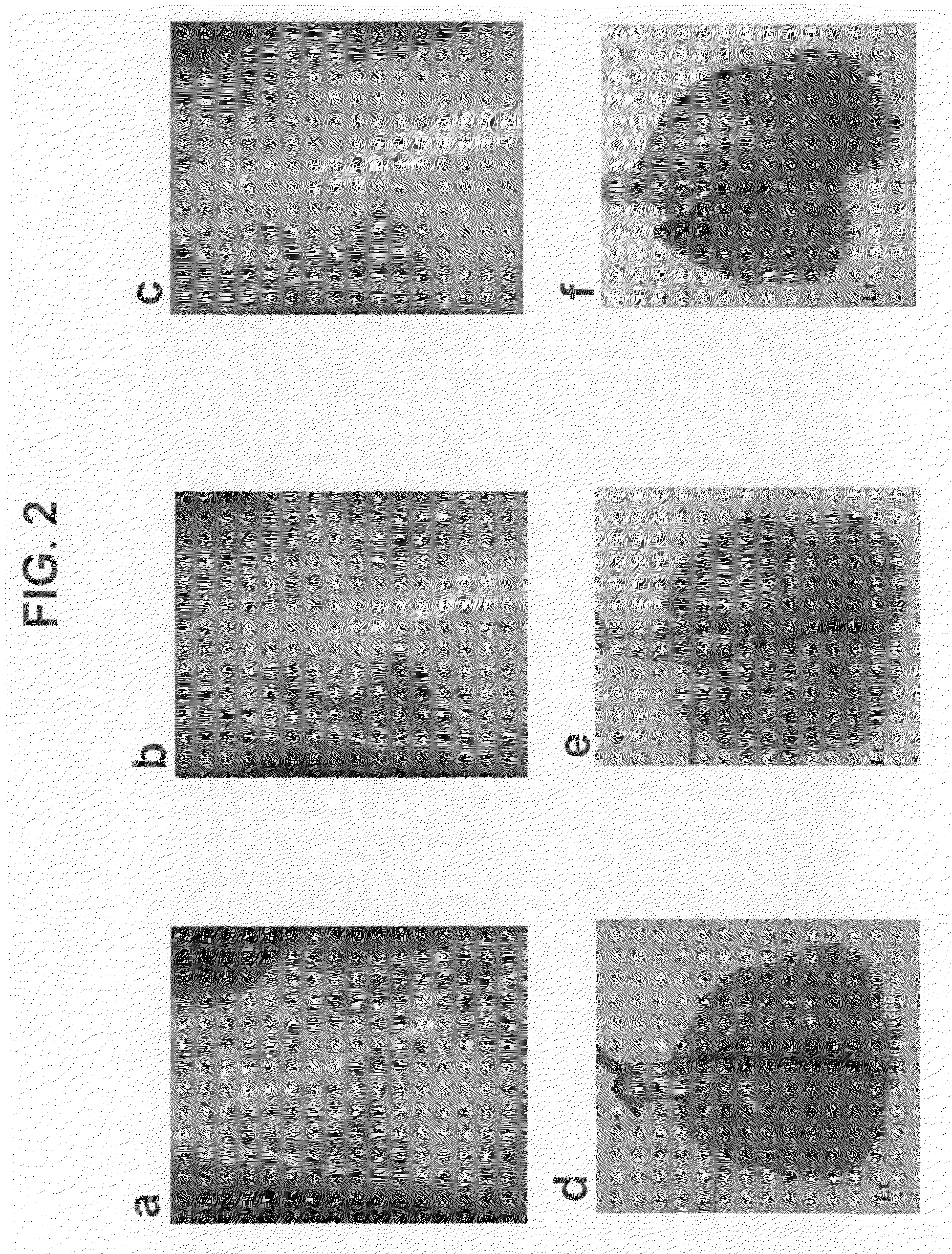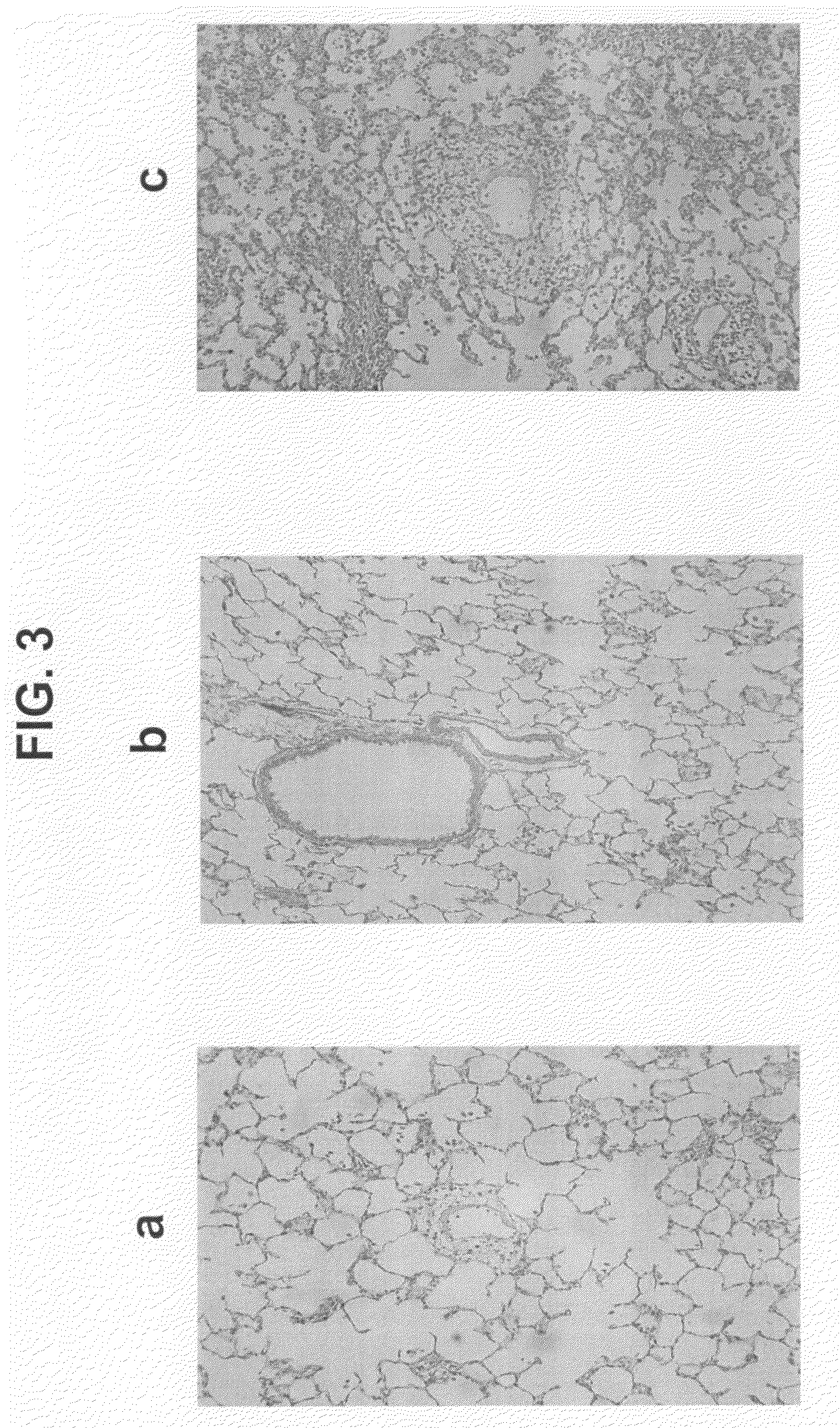Treatment for allograft rejection
a technology of allograft and treatment, which is applied in the direction of drug compositions, peptide/protein ingredients, immunological disorders, etc., can solve the problems of diffuse alveolar damage, lung injury, and unavoidable preservation-related organ injury, so as to achieve the effect of inhibiting or preventing allograft rejection
- Summary
- Abstract
- Description
- Claims
- Application Information
AI Technical Summary
Benefits of technology
Problems solved by technology
Method used
Image
Examples
example
Prevention of Neutrophil Migration Ameliorates Rat Lung Allograft Rejection
[0033]This Example is substantially published as Hirayama et al., 2006.
example summary
[0034]Background. Chemokines activate and recruit specific leukocyte subpopulations. It was evaluated whether neutrophil migration, which can contribute to the development of ischemia-reperfusion injury, correlates with lung allograft rejection.
[0035]Methods. Orthotopic left lung allotransplantation was performed from Brown Norway (donor) to Fisher 344 (recipient) rats. The role of activated neutrophils in the development of allograft rejection is believed to be biphasic. Therefore, specific CXC receptor inhibition was used with antileukinate in two dosing regimens. Recipients were allocated into 4 groups: A (early administration: n=6) received two doses of antileukinate (a hexapeptide), 10.0 mg / kg intramuscularly 24 hours before and immediately after transplantation, B (continuous administration: n=8) animals continuously received antileukinate intraperitoneally (10.0 mg / kg / day) for 7 days after surgery. Experimental groups A or B were compared with their individual control that re...
PUM
| Property | Measurement | Unit |
|---|---|---|
| diameters | aaaaa | aaaaa |
| diameters | aaaaa | aaaaa |
| pH | aaaaa | aaaaa |
Abstract
Description
Claims
Application Information
 Login to View More
Login to View More - R&D
- Intellectual Property
- Life Sciences
- Materials
- Tech Scout
- Unparalleled Data Quality
- Higher Quality Content
- 60% Fewer Hallucinations
Browse by: Latest US Patents, China's latest patents, Technical Efficacy Thesaurus, Application Domain, Technology Topic, Popular Technical Reports.
© 2025 PatSnap. All rights reserved.Legal|Privacy policy|Modern Slavery Act Transparency Statement|Sitemap|About US| Contact US: help@patsnap.com



